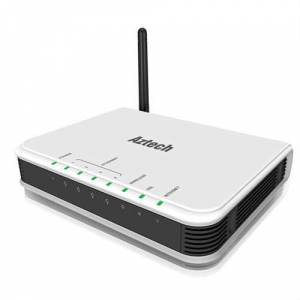Network Routers importance , types & uses
The router allows the computers to communicate over large distances , It is one of the most important components on the network , It directs the traffic across the networks , It is not a replacement for the firewall or anti-malware measures but it is the first step towards a largely secure network environment .
Network Routers
When you establish the computer network , You need to install several hardware & software components , The data is sent to the next network points in the form of packets , the transfer of packets is carried through the routers , The routers perform the task of delivering & forwarding the information .
Routers are hardware devices which direct the traffic across networks by using different routing table protocols , When the routers connect two or more networks together & use the logical addressing , this is called an Internet Address (IP) , The routers use Routing Table to make the path selections & to forward the packets to the remote networks .
When you connect the Internet modem directly to the PC , exposes that PC to the host of security issues , expanding the direct-connection network becomes complicated without the addition of switches or the router and communicating between the individual PCs becomes difficult .
How routers work
The routers are network devices that transfer the data packets along the networks by determining the paths of the networks , They determine the path to many networks such as Electronic networks , Transportation networks and telephone networks , The routers operate in two ways using either control plane or forwarding plane .
In the control plane , The router acts in a more neat & smart way , It can send the precise data packets to their specific location , While in the forwarding plane , The ultimate objective of the router is to deliver the data packets , The forwarding decision takes place at the data link layer of the OSI model .
Types of Routers
The routers can find the most efficient path between two IP-based networks , There are different types of routers , from small home routers connecting a few devices to the ISP , to the edge routers which maintain massive routing tables & connecting dozens of networks .
Although the point-to-point wire connections provide an alternative , Many modern communications setups require the router to best function , The routers are of many kinds depending on the need of the enterprises , The individuals & the official use , The largest routers such as Cisco CRS-1 & Juniper T-1600 are used to set up network of large organizations & even of the ISPs .
The routers can be divided into three broad categories depending upon the need of the network , First of their kind is the internet connectivity routers , They are large multipurpose routers , These routers are used to exchange & carry the information through the Border Gateway Protocol .
The internet connectivity routers are further divided into four sub categories , These four sub categories include the edge router , the subscriber edge router , the inter provider border router and the core router .
When the router is placed at the boundary of an ISP and when they communicate with the large autonomous router and external router , It is called edge router , Working at the boundary of the subscriber’s network , this router helps to communicate between BGP speaker and ISPs AS .
When two border gateway protocols speaks to each other via ASes , It is called the inter provider border router , The router that provides sufficient support to the LAN by becoming the integral part of the LAN is called core router , If the router is inserted to make connection to the DSL or the other networks for the small geographical area , It is known as SOHO routers .
There is the enterprise routers that have three branches access , The distribution & core routers , Low cost SOHO routers are placed at the branch offices for simple routing operations and they are termed as the access routers .
Distribution routers can collect the flow of data from several routers and they bring it to main location , Distribution routers can increase the efficiency of large networks such as WAN , Core routers are used to connect the dispersed network routers to achieve high bandwidth .
Dual band routers are a solution to signal interference , They provide the users with the ability of switching between frequencies of 2.4GHz and 5GHz to avoid the congestion in traffic , Due to the fact that many household devices will give off 2.4GHz radio frequencies .
The interference can happen to the Wi-Fi signal , because the interference will slow down the speed of the Internet , reduce range of Wi-Fi and cause some intermittent signals , With the use of dual-band routers , you will be able to enjoy the less utilized 5GHz frequency with ease .
Dual band routers are compatible with wireless devices , They are built to function with many different wireless networking equipment , Because they support both the 2.4GHz & 5GHz in which both should be able to work with any network adapter.
Dual band routers enable the customization of wireless network settings , As the advanced networking technology on the market , Dual band routers can support multiple frequencies , They will provide the ability to customize the wireless network settings in accordance with your needs .





The blog post is very useful and informative for all the people, this is a great way to explain the advantages of the routers, thank you for this blog post, because it is really helpful for us.
You are welcome